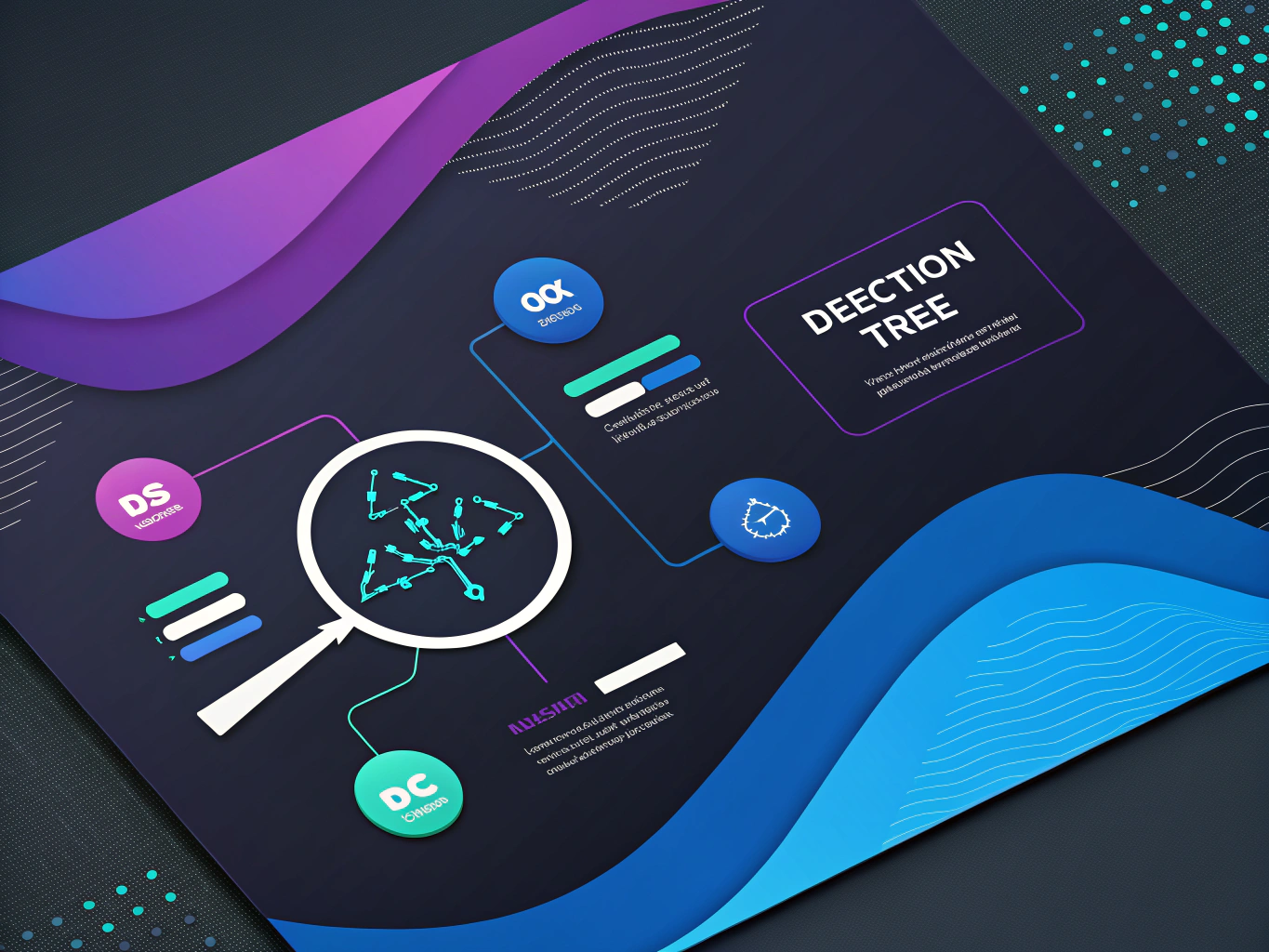Remember when we thought AI would just magically understand how humans feel? Yeah, about that… The reality of sentiment analysis using machine learning has been a bit more… interesting. Like that time my algorithm confidently declared a sarcastic product review as “overwhelmingly positive” – spoiler alert: the customer was not, in fact, thrilled about their purchase melting in the sun.

But here’s the thing: sentiment analysis isn’t just about teaching machines to recognize happy face emojis. It’s about understanding the beautiful mess that is human communication – the subtle hints, the cultural context, and yes, even that particularly spicy tweet your customer posted at 3 AM.
Understanding Sentiment Analysis Through Machine Learning: The Basics

Think of sentiment analysis through machine learning as your very eager intern who’s trying to figure out if your customers are happy, mad, or somewhere in that mysterious middle ground. It’s essentially machine learning’s attempt to decode the emotional subtext in text – whether that’s product reviews, social media posts, or that novel-length email from a particularly passionate customer.
The Three Flavors of Sentiment
Traditionally, we’ve broken sentiment analysis down into three main categories: positive, negative, and neutral. But that’s like saying there are only three flavors of ice cream. In reality, human emotions are more like Ben & Jerry’s – wildly complex and sometimes a bit nuts.
Modern sentiment analysis examples using machine learning have evolved to detect nuances like:
– Strongly positive vs. slightly positive
– Sarcasm (yes, finally!)
– Mixed sentiments (when someone loves your product but hates your pricing)
– Emotional intensity (there’s a difference between “meh” and “MEH!!!”)
Why Traditional Sentiment Analysis Methods Failed Us
Remember those early days of sentiment analysis? When we thought a simple dictionary of “good” and “bad” words would do the trick? That worked about as well as using a spoon to cut a steak. The problem wasn’t the tool – it was our understanding of how humans express emotions.
The Python Problem: When Code Meets Context
Early Python sentiment analysis tools were like that friend who takes everything literally. They’d see “This product is bad!” and mark it negative, but completely miss the sarcasm in “Oh great, another notification about my extended warranty.” Context? What’s that?
The Social Sentiment Complexity
Social sentiment analysis brought its own special chaos to the party. Suddenly, we weren’t just analyzing formal product reviews – we were trying to decode tweets, Instagram captions, and TikTok comments. It’s like trying to understand teenager slang: just when you think you’ve got it figured out, everything changes.
The Machine Learning Revolution in Sentiment Analysis

Enter modern machine learning models. These aren’t your grandmother’s if-then statements – they’re sophisticated systems that can actually learn from context. Think of them as cultural anthropologists, studying the weird and wonderful ways humans express their feelings online.
Real-time Sentiment: The Game Changer
The ability to analyze sentiment in real-time has transformed how brands interact with their customers. Imagine having a finger on the pulse of your customer base 24/7. It’s like having thousands of focus groups running simultaneously, except nobody has to eat stale cookies in a conference room.
But here’s where it gets really interesting: modern sentiment analysis models don’t just look at words in isolation. They consider:
– Historical context (previous interactions)
– Cultural nuances (yes, “wicked” means different things in Boston)
– Emerging language patterns (remember when “slay” meant something completely different?)
The Impact on Marketing and Customer Experience
For ecommerce brands and content creators, this evolution in sentiment analysis means we can finally move beyond the basic “customers like us/hate us” binary. We can understand the why behind the what. It’s like having emotional X-ray vision into your customer base.
Think about it: when’s the last time you expressed an emotion that was purely positive or negative? Human sentiment is more like a Jackson Pollock painting – messy, complex, and open to interpretation. And finally, our technology is catching up to that reality.
Building Better Sentiment Analysis Models
The key to effective sentiment analysis isn’t just throwing more data at the problem (though that helps). It’s about building models that understand context, adapt to changing language patterns, and – most importantly – recognize when they’re out of their depth. Because sometimes, the most intelligent thing an AI can do is admit it needs human help. For a beginner’s guide to text analytics, you might want to explore this tutorial on NLTK.
Traditional Machine Learning Algorithms for Sentiment Analysis

Let’s be real – sentiment analysis isn’t exactly new tech. We’ve been trying to teach machines to understand human emotions since before ChatGPT was a twinkle in Sam Altman’s eye. But here’s the thing: those “traditional” approaches? They’re still incredibly relevant, especially when you’re dealing with straightforward classification tasks that don’t need the computational heavyweight champions we have today.
The Classic Workhorses of Sentiment Analysis
Think of traditional ML algorithms for sentiment analysis as the reliable Toyota Corollas of the AI world – they might not turn heads at the tech conference, but they’ll get you where you need to go without breaking down or breaking the bank. The most common players in this space are Naive Bayes, Support Vector Machines (SVM), and Logistic Regression.
Naive Bayes is like that friend who’s surprisingly good at guessing what people are thinking despite being, well, naive about how words actually work together. It assumes all features are independent (they’re not), but somehow still manages to nail sentiment classification with shocking accuracy. It’s particularly effective when you’re working with product review data or social sentiment analysis.
Support Vector Machines: The Mathematical Powerhouse
SVMs are the overachievers of the sentiment analysis world. They work by finding the optimal hyperplane (fancy math talk for “really good dividing line”) between different sentiment classes. While that might sound like something out of a sci-fi movie, it’s actually pretty straightforward in practice. SVMs excel at handling high-dimensional data, making them perfect for text classification where you’re dealing with thousands of features.
Deep Learning Approaches: When Traditional Methods Need a Boost
Sometimes you need more than what traditional ML can offer. That’s where deep learning comes in – it’s like upgrading from that reliable Corolla to a Tesla. Sure, it’s more complex and requires more resources, but the results can be worth it, especially when dealing with nuanced sentiment analysis using NLP.
The Rise of Neural Networks
Neural networks, particularly Recurrent Neural Networks (RNNs) and their fancier cousins LSTMs and GRUs, have revolutionized how we handle sentiment in text. They’re particularly good at understanding context – something traditional methods often struggle with. Ever tried to detect sarcasm in a product review? That’s where these bad boys shine.
But here’s the catch – and this is something I learned the hard way with ProductScope AI – you need a lot of data and computing power to make these models work effectively. It’s like trying to train a professional athlete; you need both good genetics (architecture) and proper nutrition (data).
Transformer Models: The New Kids on the Block
BERT, GPT, and their variants are the current rockstars of sentiment analysis. They’ve taken the NLP world by storm, and for good reason. These models understand context in ways that make previous approaches look like they’re reading with one eye closed.
But let’s not get carried away with the hype. Yes, transformer models are powerful – they can achieve real-time sentiment analysis with impressive accuracy. But they’re also like having a Formula 1 car for your daily commute. Sometimes you’re better off with something simpler.
Practical Implementation: Making It Work in the Real World

Here’s where the rubber meets the road. When implementing sentiment analysis tools using machine learning, you need to consider your specific use case. Are you analyzing customer sentiment analysis from product reviews? Tracking social sentiment analysis across Twitter? The application should drive your choice of technology.
Choosing the Right Model
For most ecommerce brands and content creators, I recommend starting with simpler models. If you’re just beginning to analyze customer feedback or social media sentiment, a well-tuned Naive Bayes or Logistic Regression model might be all you need. You can always scale up to more sophisticated approaches as your needs grow.
Remember that perfect is the enemy of good. I’ve seen too many projects fail because they tried to implement the most advanced solution right out of the gate. Start simple, validate your approach, and iterate based on real feedback.
The Role of Data Quality
Here’s something that doesn’t get enough attention: the quality of your training data matters more than your choice of algorithm. You can have the most sophisticated sentiment analysis model in the world, but if you’re training it on garbage data, you’re going to get garbage results.
When working with sentiment score calculations, make sure your training data is representative of your actual use case. If you’re analyzing product reviews, don’t train your model on movie reviews. The language and context are completely different.
And please, for the love of all things tech, clean your data properly. Remove duplicates, handle missing values, and make sure your sentiment labels make sense. It’s not the sexy part of machine learning, but it’s crucial for success.
Deployment and Scaling
Finally, think about how you’ll deploy and scale your sentiment analysis solution. Will you need real-time analysis? Are you dealing with thousands of reviews per day or just a few dozen? These considerations should influence your technical choices.
Remember, the goal isn’t to build the most advanced sentiment analysis system possible – it’s to solve a specific business problem effectively. Sometimes that means using Python sentiment analysis libraries like NLTK or TextBlob instead of building custom models. For a deeper dive into sentiment analysis applications, check out this guide on sentiment analysis.
Advanced Machine Learning Models for Sentiment Analysis
Let’s be honest – transformer models like BERT and GPT have completely changed the game when it comes to sentiment analysis using AI. They’re like that one intern who showed up and somehow knew more than the senior engineers (we’ve all been there).
But here’s the thing about these fancy neural networks – they’re resource-hungry beasts. Training BERT from scratch? You might as well try mining Bitcoin on your laptop. This is why many ecommerce brands are turning to lightweight alternatives that don’t require a small data center to run.
Finding the Sweet Spot: Performance vs. Resources
The real magic happens when you match the right model to your specific needs. For most brands analyzing customer reviews or social mentions, you don’t need the computational equivalent of a nuclear reactor. A well-tuned “lightweight” transformer like DistilBERT can give you 95% of BERT’s performance at 40% of the computational cost.
Real-world Applications in Ecommerce
I’ve seen sentiment analysis using large language models transform how brands interact with their customers. One DTC beauty brand we worked with at ProductScope AI used sentiment analysis to track reactions to their new skincare line across social media. Instead of waiting weeks for focus group results, they could adjust their messaging in real-time based on customer sentiment.
Social Sentiment Analysis That Actually Works
Remember when social sentiment analysis on Twitter tools would flag “This product is sick!” as negative sentiment? Those days are (mostly) behind us. Modern ML models understand context, slang, and even some forms of sarcasm – though my teenage nephew still manages to confuse them regularly.
Customer Sentiment Analysis in Practice
The real power comes from combining different analysis methods. A python sentiment analysis pipeline might use:
– Basic sentiment scoring for quick triage
– Aspect-based analysis to understand specific feature feedback
– Real-time sentiment tracking for crisis management
– Deep learning models for nuanced emotional analysis
Looking Ahead: The Future of Sentiment Analysis
We’re entering an era where sentiment analysis is becoming increasingly sophisticated. Large language models can now understand emotional nuances that would have been impossible to detect just a few years ago. But let’s not get carried away – they’re still not perfect at detecting your aunt’s passive-aggressive Facebook comments.
Emerging Trends and Technologies
The most exciting developments I’m seeing involve multimodal sentiment analysis – combining text, image, and even video analysis to understand customer sentiment holistically. Imagine being able to analyze not just what customers say about your product, but their facial expressions while unboxing it on TikTok.
Best Practices for Implementation
If you’re looking to implement sentiment analysis models in your business, here’s what I’ve learned from working with hundreds of brands:
1. Start small and scale up – begin with basic sentiment scoring before diving into deep learning
2. Focus on data quality over quantity – clean, relevant data beats big, messy data every time
3. Consider domain-specific training – general models often miss industry-specific nuances
4. Plan for real-time analysis – customer sentiment can shift faster than crypto prices
Conclusion: Making Sentiment Analysis Work for You
The beauty of modern sentiment analysis using machine learning isn’t just its accuracy – it’s its accessibility. You don’t need a PhD in computer science or a massive IT budget to get started. Tools and APIs have democratized access to these technologies, letting brands of all sizes tap into the power of automated sentiment analysis.
But here’s the thing I always tell our clients at ProductScope: AI isn’t magic. It’s a tool, like any other. The real value comes from how you use it to enhance human decision-making, not replace it. Think of sentiment analysis as your very eager research assistant – incredibly helpful, but still needs supervision and context.
The future of sentiment analysis is incredibly exciting, but it’s important to stay grounded in practical applications. Focus on solving real business problems rather than chasing the latest AI buzzwords. And remember – sometimes the most powerful insights come from combining traditional methods with cutting-edge technology.
As we wrap up this guide, I’d encourage you to start small, experiment often, and always keep your customers at the center of your analysis. After all, sentiment analysis is just a fancy way of listening to what people are saying about your brand. The technology is just helping us do it at scale.
And hey, if you’re feeling overwhelmed by all this – remember that even the most sophisticated AI models sometimes struggle to tell if “This is bad!” means “This is terrible” or “This is awesome.” We’re all still learning, one sentiment at a time.
Related Articles:
- Sentiment Analysis: How AI Decodes Customer Feelings
- Sentiment Analysis Machine Learning: A Beginner’s Guide
- Sentiment Analysis: 5 Ways to Decode Customer Feedback
Frequently Asked Questions
How is machine learning used in sentiment analysis?
Machine learning is used in sentiment analysis by training algorithms to automatically identify and classify sentiments expressed in text data. It involves using labeled datasets where text samples are marked with sentiment labels, such as positive, negative, or neutral. The model learns patterns and features associated with these sentiments during the training process, enabling it to predict sentiments in unseen data, thus automating the analysis of large volumes of text.
What is the best ML model for sentiment analysis?
The best ML model for sentiment analysis often depends on the specific dataset and requirements of the task, but models like BERT, a transformer-based model, have shown state-of-the-art performance. BERT’s ability to understand context and nuances in language helps it capture sentiment more accurately than traditional models. However, simpler models like logistic regression or support vector machines (SVM) may still be effective for smaller datasets or less complex tasks.
What methods can be used for sentiment analysis?
Sentiment analysis can be performed using various methods, including rule-based approaches, machine learning techniques, and deep learning models. Rule-based methods use predefined linguistic rules to infer sentiment, while machine learning approaches involve training algorithms on labeled data to classify sentiment. Deep learning models, such as recurrent neural networks (RNNs) or transformers, can capture more complex patterns and contextual information, often leading to improved accuracy.
What algorithm to use for sentiment analysis?
The choice of algorithm for sentiment analysis depends on factors like dataset size, required accuracy, and available computational resources. Naive Bayes and support vector machines are popular choices for traditional machine learning approaches due to their simplicity and effectiveness. For more complex tasks, deep learning algorithms like LSTM or transformer-based models such as BERT or GPT are recommended for their superior ability to understand context and nuances in text.
Can ChatGPT do sentiment analysis?
Yes, ChatGPT can perform sentiment analysis as it is built on models like GPT that are capable of understanding and generating human-like text. While not specifically designed for sentiment analysis, it can be fine-tuned or used with prompts to analyze sentiments in text. However, dedicated sentiment analysis models may offer more precise results, especially when trained specifically for sentiment tasks.
About the Author
Vijay Jacob is the founder and chief contributing writer for ProductScope AI focused on storytelling in AI and tech. You can follow him on X and LinkedIn, and ProductScope AI on X and on LinkedIn.
We’re also building a powerful AI Studio for Brands & Creators to sell smarter and faster with AI. With PS Studio you can generate AI Images, AI Videos, Blog Post Generator and Automate repeat writing with AI Agents that can produce content in your voice and tone all in one place. If you sell on Amazon you can even optimize your Amazon Product Listings or get unique customer insights with PS Optimize.
🎁 Limited time Bonus: I put together an exclusive welcome gift called the “Formula,” which includes all of my free checklists (from SEO to Image Design to content creation at scale), including the top AI agents, and ways to scale your brand & content strategy today. Sign up free to get 200 PS Studio credits on us, and as a bonus, you will receive the “formula” via email as a thank you for your time.




